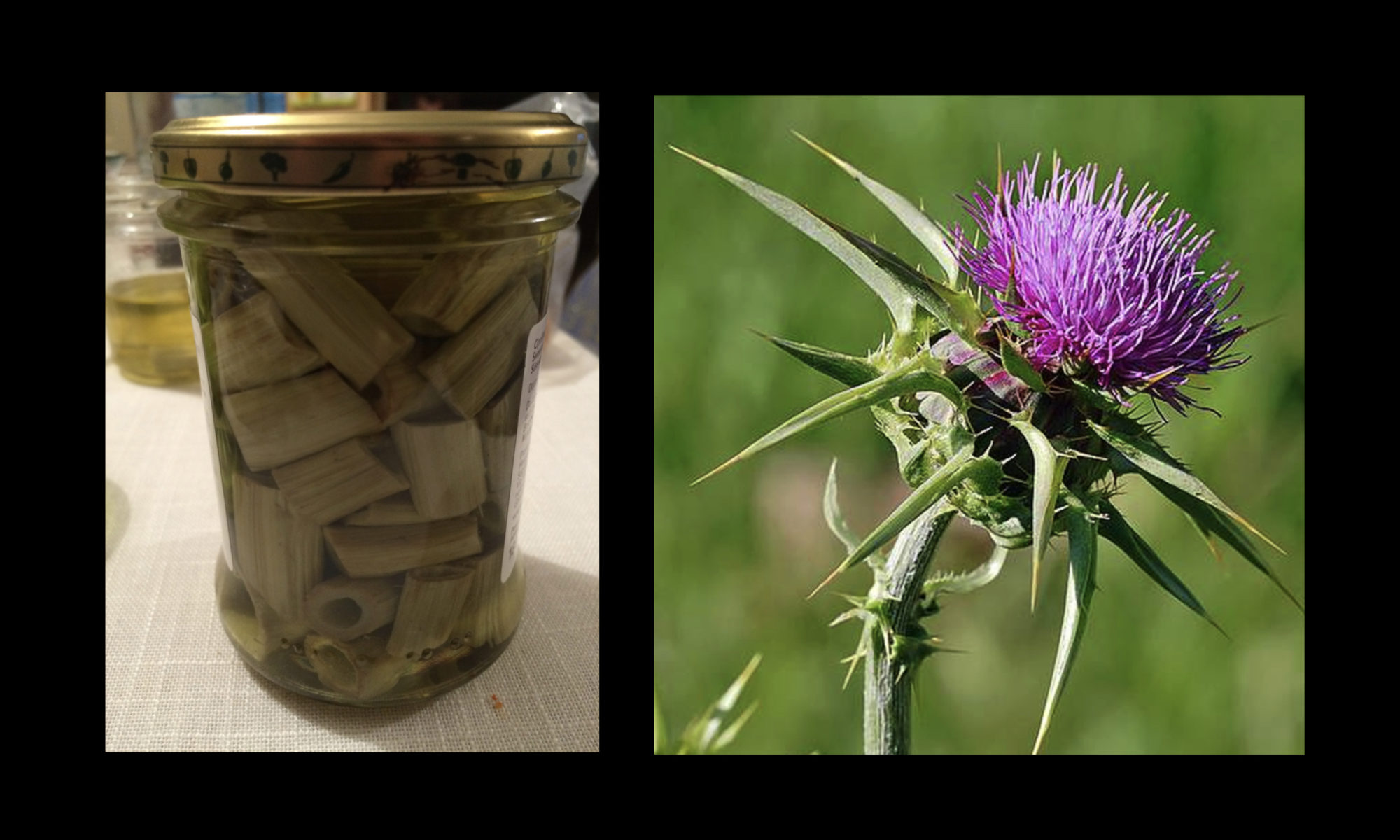I love talking about this vegetable, both because of my introduction to it, and because of how well I believe it represents characteristic Sardinian traits of fortitude, hardiness, patience, and transforming what seems daunting and difficult — be it situations, people, or things — into a result that is beautiful, thoughtful, and golden.
I first encountered this preserved vegetable during an early visit to the island. I was in Samugheo and eating dinner with Susanna, Isa, and the extended family — Angelina, Anna, Tiziana, and Cri — and they offered me some of this vegetable, obviously locally grown, carefully picked, and lovingly prepared. I had come to learn that Angelina, Susanna’s sister, was the cook and gardener for the family, and most if not all of the vegetables presented at the table were grown and/or preserved by Angelina’s strong and graceful hands.
Isa offered me an open jar of this preserved vegetable, and — as is characteristic of me — I put a generous portion on my plate despite not knowing what the vegetable was. As I tasted the it, I wondered: Lotus root? No, none of the little seeds, and there were no ponds here where lotus would grow. Okra? No, not the right taste or consistency. Celery? This seemed a bit tougher than celery, and had a open center channel not common to celery, and it didn’t really taste like celery — but I could not think of what else it might be, and I’m pretty good at “name that vegetable.” I convinced myself that it was just a different type of celery, that the olive oil in which it was preserved masked some of the taste, and happily munched.
“Ti piace?” Isa gestured towards the jar, asking me if I liked the vegetable.
I nodded. “Si. E’ sedano?” Yes. Is it celery?
“No. Cardo.”
“Cardo? Non lo so cardo. . .” I didn’t know what cardo was, and a quick check of the limited Italian dictionary I had on my phone at that time didn’t yield any results.
Isa tried to describe cardo to me, saying it grew everywhere, wild. I think she was a bit bewildered that I didn’t know what this vegetable was, as it was obviously so common. Rising, she walked over to her computer, googled, and pointed to the photo now displayed on the screen.
“Cardo.”
THISTLE!
“Ah!” I said. “Si chiama thistle in inglese! Abbiamo cardo nelle colline e nei giardini da California, anche fuori casa mia! Ma non lo mangiamo!”
Yes, we have thistle in the hills around San Francisco, even outside my house — we just don’t eat thistle!
I was imagining harvesting the plant — ouch — and peeling the spiny stalks — ouch again — before cutting the stalk-hearts and soaking them in oil. It seems a bit. . . intimidating. I keep thinking I’ll harvest a stalk or two of California’s wild thistle when the season’s right, but I haven’t yet, and it’s been some years.
Fortitude, hardiness, patience, and transforming what seems daunting and difficult into a result that is beautiful, thoughtful, and golden: I have seen the women of Sardinia do this with everything — no matter how thorny!

